I am a freak when it comes to smartphone cases.
If I see a family member or friend running around with an unprotected device, my first instinct is to fit that person’s device with a case after recovering from a panic attack.
I usually have a few models sitting in my “case box,” and if the case fits, it’s going on the phone if you show up at my house without one.
I used to say that any case on a smartphone is better than no case at all. The main thing you need to be concerned with is bezel elevation to prevent the phone from falling flat on the screen and taking a direct impact.
Secondary to that concern, you want edge rigidity and shock absorption to buffer against hits on the side and corners.
Before introducing edge, bezel-free screen designs — first seen in devices like the Samsung Galaxy S7 Edge, followed by 2017’s iPhone X and 2018’s iPhone XS and iPhone XS Max — I would have maintained that, yes, put on any case, because it’s way better than using nothing at all.
But given how fragile the design is of this particular phone, and how much this thing dents your wallet when you buy it, and heaven forbid repair it after drop damage, I’m going to have to change my mind on that one.
You want the most protective design money can buy.
The OtterBox Defender and competitors
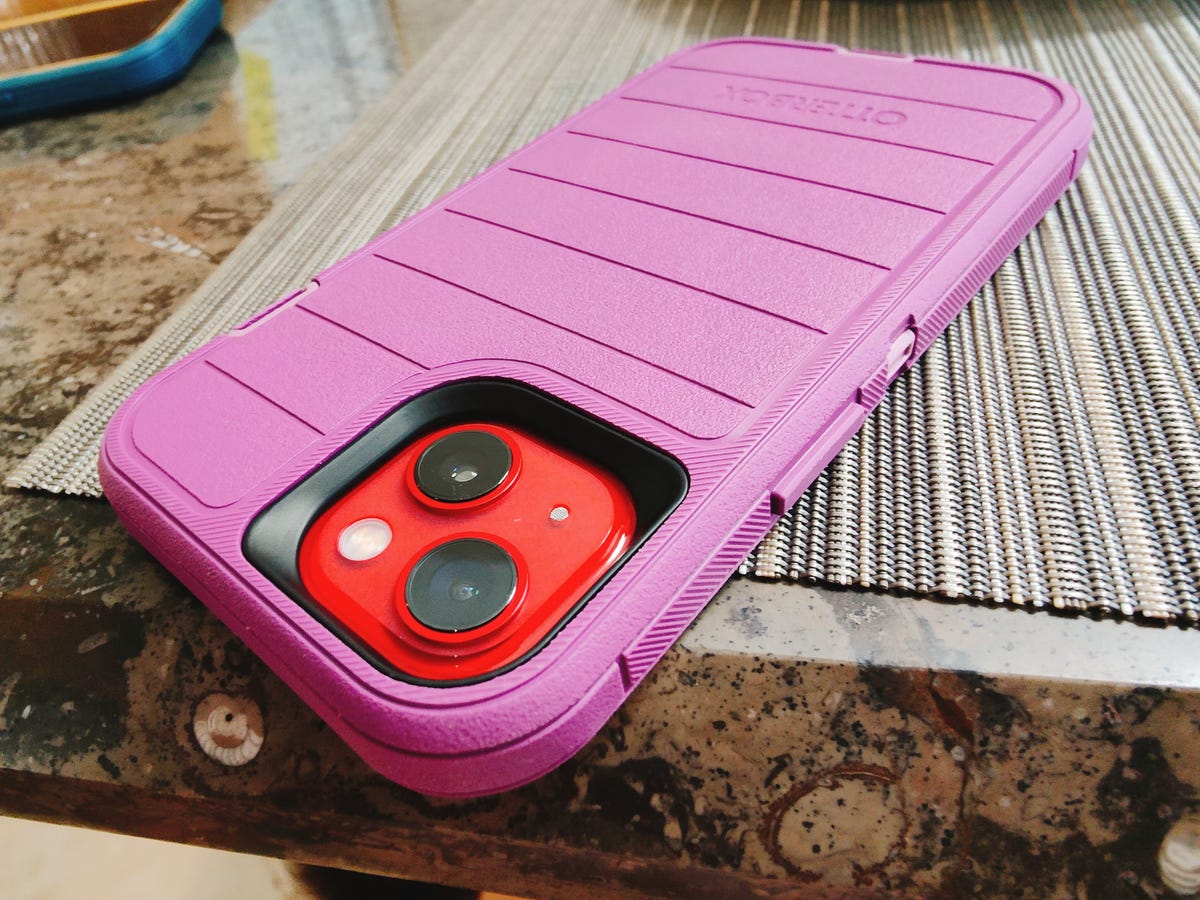
Otterbox Defender Pro for iPhone 13
Jason Perlow/ZDNet
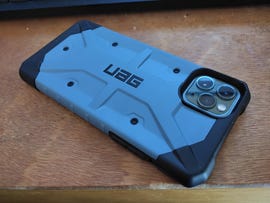
UAG Pathfinder (11 Pro Max model shown)
Jason Perlow/ZDNet
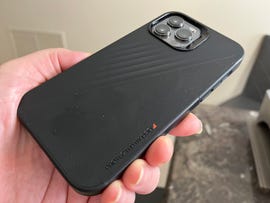
ZAGG Gear4 D30 material case for iPhone 13 Pro Max. The company has many color styles to choose from, most of which are also MagSafe-compatible.
Jason Perlow/ZDNet
Otter Products is the largest player in the ultra-protective smartphone case market, and I am a massive fan of its offerings. When I am asked by friends and family which case to get, an Otter case is always my first answer.
Otter traditionally had one ultra-protective design, which is the Defender, and for years I only used Defenders no matter which device I had. I still only use Defender on the iPad Pro, because it’s the only case I trust on that device right now.
You could get a Defender Series Pro (or the original Defender) for your iPhone 13, iPhone 13 Pro, or iPhone 13 Pro Max. You would be very safe with that decision, and my work would be done. It has a rugged, proven rubber-wrapped clamshell design, so it’s practically a no-brainer.
However, Apple’s addition of MagSafe with the rollout of iPhone 12 in 2020 complicated case designs. The traditional Defender design with its thick casing and heavy rubberized wrapping won’t work with it, so they’ve added some new case SKUs — such as the Defender Pro XT with MagSafe, which we will get to, in a bit.
Several other brands specialize in extreme device protection. One is UAG, and it is an excellent company with great case products. The Pathfinder and the Monarch are outstanding choices for protecting your new $1,000+ device.
We are also partial to ZAGG’s Gear4 line of cases that feature D30 shock-absorbent material and are optimized for use with MagSafe charging and Survivor’s Earth line of extreme protection cases. All three of these companies are solid choices if you are looking for no-compromise protection and stylish designs.
LifeProof and Otterbox enhanced protection cases
Over the past few years, Otter expanded its line of case designs in its own branded offerings with its acquisition of LifeProof, which was once a fierce competitor.
LifeProof cases once distinguished themselves from OtterBox cases in that they targeted sporty lifestyle customers, with an emphasis on waterproofing. So, LifeProof cases were always a little bit more expensive than OtterBox designs.
The LifeProof lineup has gotten much bigger than it used to be, and it has made choosing a case on this lineup much more complicated with the introduction of MagSafe. We also used to have a nice simple chart we could show you that easily outlined the differences, but alas, there isn’t one for 2021.
The iPhone 13 line can be summarized as the Next style, the Fre style, the See style, and the Wake style. See and Wake are both snap-on styles similar to UAG or Gear4. They are sufficiently protective but not the “ultra” protective style. I don’t want to spend too much time on them, but these are good choices if you want something light, stylish, and reasonably strong. Similarly, OtterBox has the Symmetry and Commuter which are also snap-on designs.
Lifeproof’s “ultra” protectives are the Next and the Fre.
Next is Lifeproof’s strongest non-waterproof case, using a sealed two-piece clamshell design with considerably more bumper material on it and bezel protection than Wake or See.
It is a tight-fitting design that provides ample bezel elevation and side/corner impact protection. However, it doesn’t integrate additional screen protection for scratches or frontal impacts, so you will want one of Otterbox/Lifeproof’s Alpha Glass protectors to complement it. ZAGG, which produces the Gear4 case mentioned above, also has an excellent line of glass protectors, the Invisible Shield.
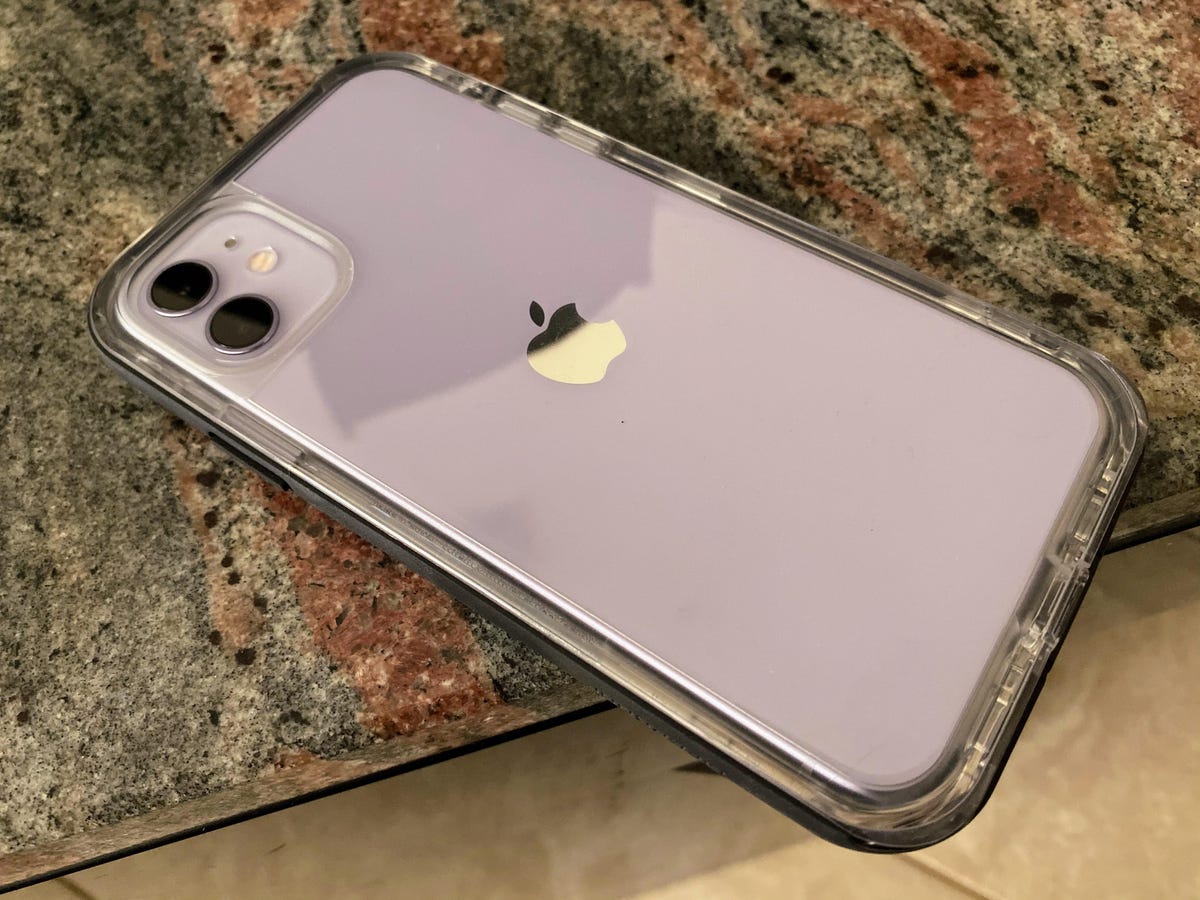
LifeProof Next (iPhone 11 shown)
(Image: ZDNet)
So are we done here? Nope, because as I mentioned earlier, Lifeproof’s parent brand, Otterbox, now has a similar Magsafe-compatible double clamshell case, and this one is rubberized too.
Otter now has the Defender Pro XT, a design derived from the Pursuit case they sold a few years ago, which they briefly discontinued, but revived in 2020 for the iPhone 12 series. I happen to like it a lot. It’s not as rubberized or as thick as the Defender, so its bezel and corner protection aren’t as robust, but as a compromise between protection and still being able to use MagSafe, it’s a very good one.
If you want super strong and protective, and you want transparent but not waterproof, and you want MagSafe, you want the Next. If you want super strong and protective and don’t care about transparency or waterproofing, but like rubberized coatings, you want Defender Pro XT with MagSafe.
LifeProof waterproof cases
The iPhone 13 and iPhone 13 Pro/iPhone 13 Max are already IP68 water-resistant and can survive 30 minutes of immersion at depths of two meters, so if the primary concern is being dropped with occasionally being rained on, Next or Defender Pro XT with MagSafe is what I would go with.
However, nothing is so simple about making case recommendations for iPhone 13 and iPhone 13 Pro/iPhone 13 Max.
I have not yet received the iPhone 13 Pro Max version of Fre, as the company didn’t have a production sample ready yet, but I had one on my iPhone 12 Pro Max, my wife’s iPhone 11, earlier models of Google Pixel, and my Samsung Galaxy S8. So, we can infer that the overall design is going to be similar.
Fre is LifeProof’s tried and true waterproof case design, which also incorporates a permanent scratch protector of a flexible film. This is the case that traditionally provided brand differentiation from OtterBox and the Defender.
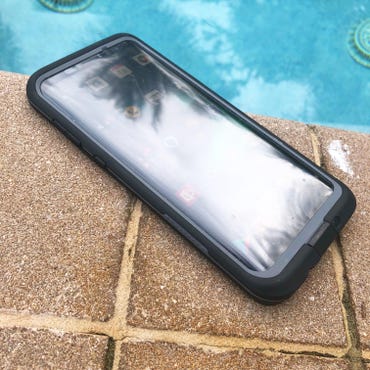
LifeProof Fre for Samsung Galaxy S8
(Image: ZDNet)
Now, with iPhone 13 and iPhone 13 Pro/iPhone 13 Pro Max already being iP68 rated, to begin with, it might seem that Fre is overkill.
Perhaps, I would tend to agree with this — if we weren’t talking about a $1,000+ device that costs $275 to $400 to replace the screen regardless of whether you bought the thing outright or you are making lease payments on the Upgrade Program.
On iPhone 13 and iPhone 13 Pro/iPhone 13 Max, Fre has a watertight lightning charge connector door latch in addition to a permanent screen/scratch protector. I’m not sure how necessary this is, but if you spend time near the water or on the beach, it’s a good idea to have this feature.
Additionally, given that you are now constantly rubbing your finger with nails on the screen itself instead of pushing a physical home button, I think a screen protector on an iPhone 13 or iPhone 13 Pro/iPhone 13 Pro Max is a requirement.
In 2021 LifeProof has added a separate SKU for a MagSafe-compatible Fre in addition to its traditional one. I’m inclined to say for the extra $10 you should get it over the older design.
Scratch-resistant glass
All of the new OtterBox cases (and the LifeProof Next) for iPhone 13 and iPhone 13 Pro/iPhone 13 Pro Max can accommodate the Alpha Glass accessory, which provides additional scratch and impact protection.
Can you buy a third-party scratch-resistant film to put on a Defender? But then you should get a Fre, and it’s cheaper.
Would you rather have an additional glass protector instead? In terms of aesthetics, it looks better and is easier to clean, and I think the few extra microns of glass gives me more peace of mind.
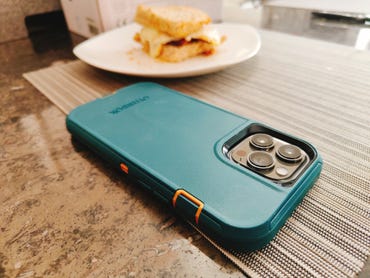
Otterbox Defender Pro for iPhone 13 Pro Max
Jason Perlow/ZDNet
I see no point in using either Defender(s) or Next without glass. So, really, in terms of the overall decision matrix of which case to buy, in my opinion, it comes down to:
- You want a holster with an integrated kickstand, full thick rubberization, and the tried and true Otter design (Defender/Pro + Alpha glass)
- You want it to be highly protective but transparent as well as MagSafe compatible (Next + Alpha glass )
- You want it to be highly protective but rubber-coated, well as MagSafe compatible (Defender Pro XT + Alpha glass )
- You want it to be more waterproof than what the device provides out of the box, and you want scratch protection but not additional screen impact protection, and optional MagSafe compatibility (Fre)
With any of these four case designs, you’re in good hands. Which one are you planning to use? Talk Back and Let Me Know.

